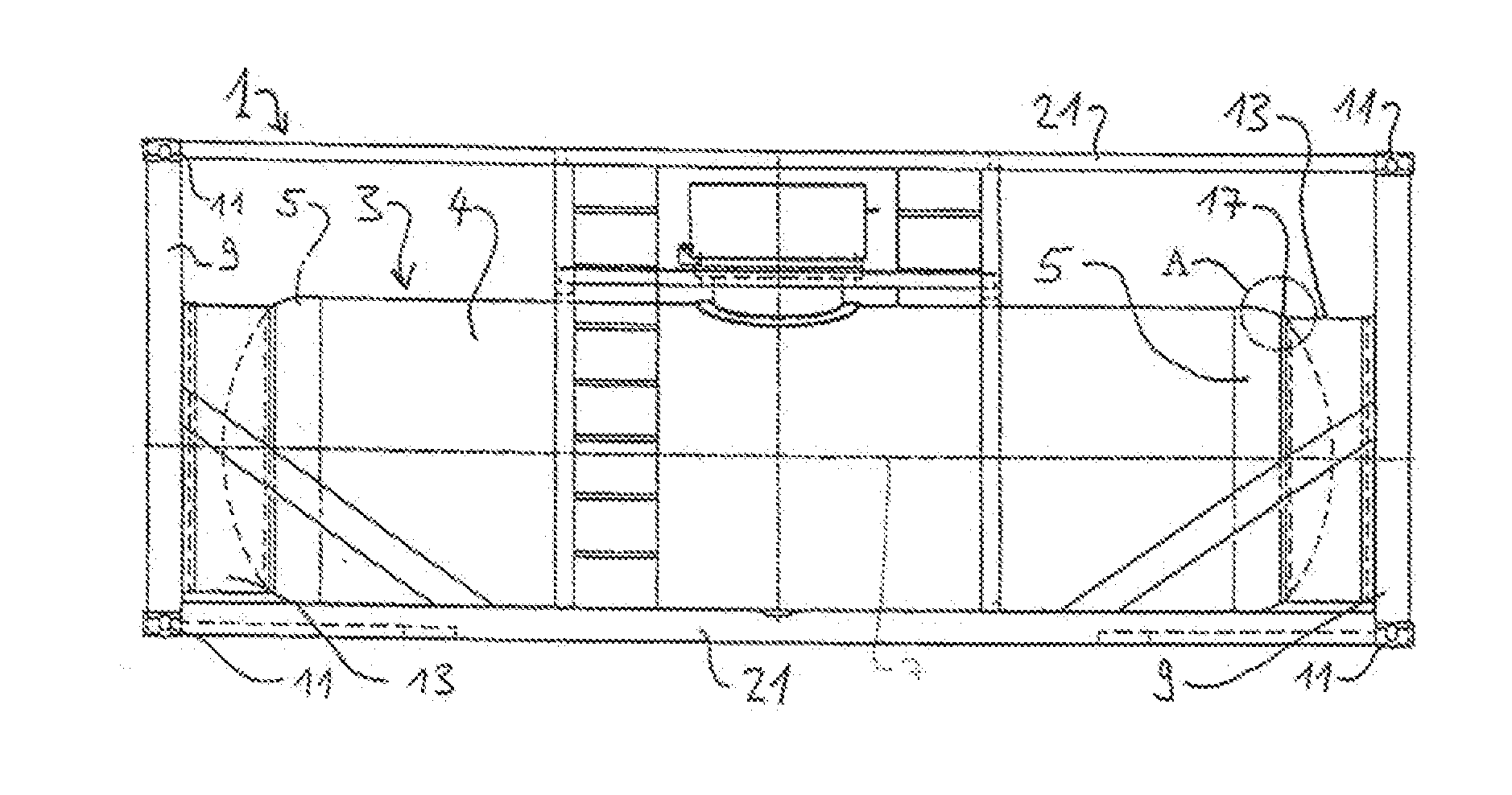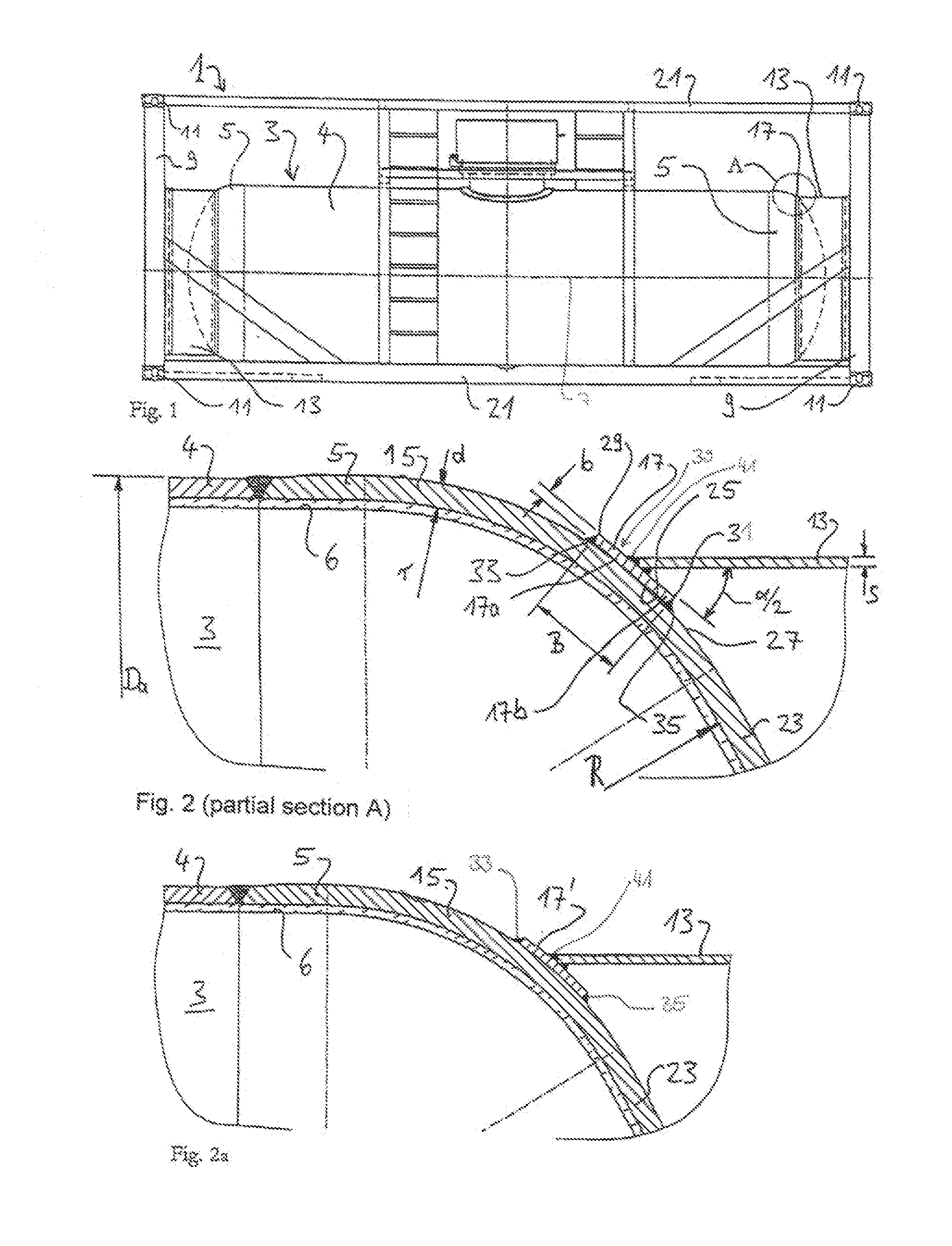Tank container
a technology for tank containers and liners, applied in the field of tank containers, can solve the problems of destroying the protective effect of tank linings, not being suitable for some cargoes,
- Summary
- Abstract
- Description
- Claims
- Application Information
AI Technical Summary
Benefits of technology
Problems solved by technology
Method used
Image
Examples
Embodiment Construction
[0018]FIGS. 1 and 2 show an embodiment according to the invention. Prior to their detailed description, some general elucidations of further embodiments are provided in what follows.
[0019]In an embodiment of the tank container, the angle of conicity a of the annular support is between 60° and 100° and preferably between 70° and 90°. In that manner, the load application, in particular of loads acting in the longitudinal direction, is improved. This is so because in that manner the load component acting longitudinally is applied further outwardly and in longitudinal direction into the cylindrical jacket. The deformation effect of such loads onto the bottom is minimized.
[0020]In an embodiment, in which a width B of the annular support is so provided that it covers between 20% and 30% of the exterior area of the rim region, the load transfer surface (the broad surface of the annular support, i.e. the inner side of the cone) is so large that a very effective load distribution over the bo...
PUM
 Login to View More
Login to View More Abstract
Description
Claims
Application Information
 Login to View More
Login to View More - R&D
- Intellectual Property
- Life Sciences
- Materials
- Tech Scout
- Unparalleled Data Quality
- Higher Quality Content
- 60% Fewer Hallucinations
Browse by: Latest US Patents, China's latest patents, Technical Efficacy Thesaurus, Application Domain, Technology Topic, Popular Technical Reports.
© 2025 PatSnap. All rights reserved.Legal|Privacy policy|Modern Slavery Act Transparency Statement|Sitemap|About US| Contact US: help@patsnap.com


